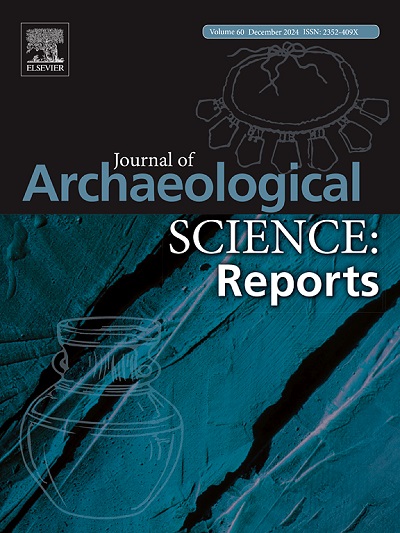What jewelry did people wear in the Middle Byzantine period (10th-12th C. CE) in the Peloponnese? A technological and analytical case study
IF 1.5
2区 历史学
0 ARCHAEOLOGY
引用次数: 0
Abstract
The present paper presents the preliminary results of the archaeometric analysis of a Middle Byzantine jewelry assemblage made of non-precious metals from the ancient site of Pallantion, near Tripoli (Peloponnese, Greece). The assemblage under examination consists of 26 artifacts, including earrings, finger rings and buckles. Macroscopic observations and optical microscopy were used to examine the manufacturing technology of the artifacts, with a particular focus on the manufacturing technology of wires. The proposed methodology combined a Handheld X-ray Fluorescence Spectrometer (HH-XRF) and a Micro X-ray Fluorescence Spectrometer (μ-XRF) to group the alloys used in the manufacture of the jewelry, despite the presence of corrosion. This methodology indicated that the majority of the artifacts was made of bronze, leaded or not, and gunmetal. Moreover, a quantification criterion was used to determine the state of preservation of the surface of the jewelry. Overall, the present study highlights the manufacturing technology of jewelry of the Middle Byzantine period and the tendency to imitate silver jewelry with lower-cost materials.
拜占庭中期(公元前 10-12 世纪)伯罗奔尼撒半岛的人们佩戴什么首饰?技术和分析案例研究
本文介绍了对的黎波里(希腊伯罗奔尼撒半岛)附近帕兰提翁古遗址出土的一批拜占庭中期非贵金属首饰进行考古计量分析的初步结果。此次展出的珠宝共有 26 件,包括耳环、指环和扣环。研究人员利用宏观观察和光学显微镜对这些文物的制造技术进行了研究,重点是金属丝的制造技术。建议的方法结合了手持式 X 射线荧光光谱仪(HH-XRF)和微型 X 射线荧光光谱仪(μ-XRF),对制造珠宝时使用的合金进行分组,尽管存在腐蚀。这种方法表明,大部分文物是由青铜、含铅或不含铅的青铜和枪铜制成的。此外,还采用了量化标准来确定首饰表面的保存状况。总之,本研究强调了拜占庭中期珠宝的制造技术以及用低成本材料仿制银饰的趋势。
本文章由计算机程序翻译,如有差异,请以英文原文为准。
求助全文
约1分钟内获得全文
求助全文
来源期刊

Journal of Archaeological Science-Reports
ARCHAEOLOGY-
CiteScore
3.10
自引率
12.50%
发文量
405
期刊介绍:
Journal of Archaeological Science: Reports is aimed at archaeologists and scientists engaged with the application of scientific techniques and methodologies to all areas of archaeology. The journal focuses on the results of the application of scientific methods to archaeological problems and debates. It will provide a forum for reviews and scientific debate of issues in scientific archaeology and their impact in the wider subject. Journal of Archaeological Science: Reports will publish papers of excellent archaeological science, with regional or wider interest. This will include case studies, reviews and short papers where an established scientific technique sheds light on archaeological questions and debates.
 求助内容:
求助内容: 应助结果提醒方式:
应助结果提醒方式:


